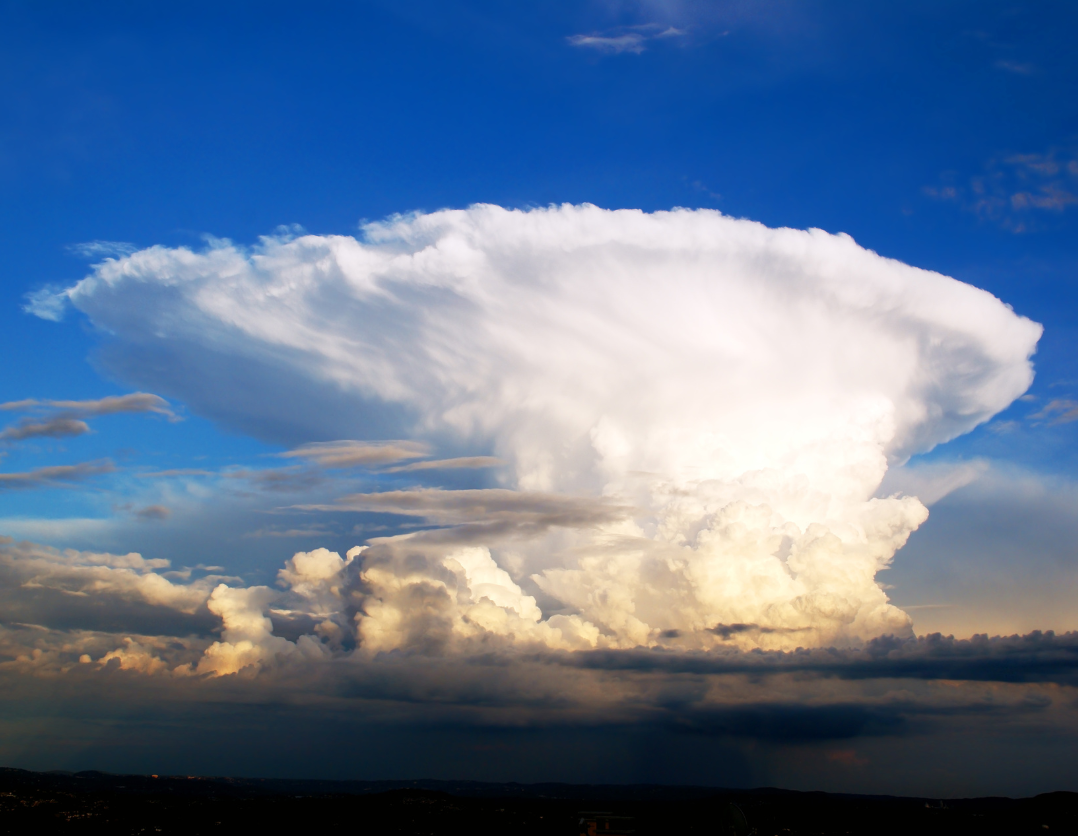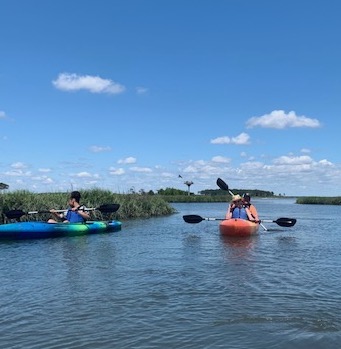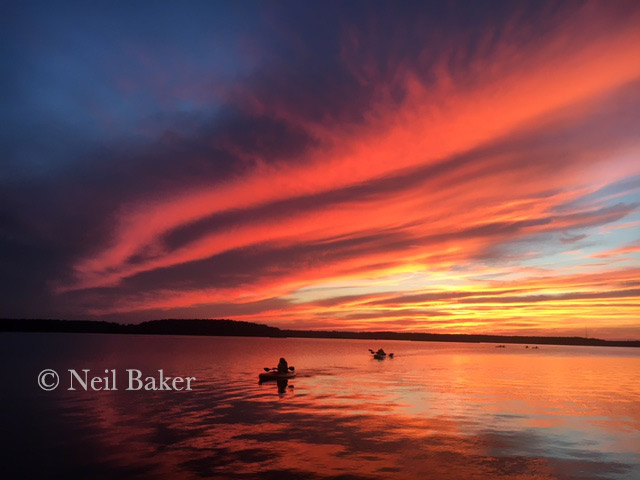We depend so much on weather forecasts and apps these days. But in our area, neither are very accurate. Paddlers miss out on some beautiful days on the water because they trust their app exclusively instead of trusting their own eyes.
Maybe it’s time to stop looking at our phones for the weather, and just go outside and look up!
Before radar and computer models, people watched the sky to help determine what weather was heading their direction. Mariners especially had to divine the meaning of different cloud patterns – their lives depended on it! It takes years of study and observation to accurately predict weather from watching the clouds. But if we, as paddlers, can recognize fair versus changing conditions, we can make good decisions about whether or not it’s a good time to go out. Or, if we’re already on the water, we’ll know when it’s time to head back to shore.

The most important cloud for a paddler to recognize is the cumulonimbus. This is the traditional thunderhead, tall and sometimes cauliflower shaped at the top. It’s the only cloud that contains lightning. It can also bring hail and strong, gusty, shifting winds. Cumulonimbus clouds are violent because they tower up through multiple layers of the atmosphere. Their bottoms are hot but their tops are cold.

The happy clouds on our “Cloud-based Solutions on Little Assawoman Bay” tee are fair weather cumulus clouds. For people with pareidolia (the tendency to see recognizable shapes in clouds) cumulus clouds can look like bunnies, dogs, camels, a thumbs-up, etc. While they usually portend good weather, if it is a hot day, you’ll want to keep an eye on them. Cumulus clouds over a hot surface (land) can build into a storm cloud.

If a cumulus cloud stays white and puffy or shrinks, fair weather will continue. If the bottom of it appears grayish, that means moisture is building. As long as the cloud doesn’t grow, everything is still fine. However, if it starts expanding out, and especially up, things are changing. When they boil up and out rapidly, it’s becoming a thunderhead (cumulonimbus) and you’ll want to head back to land.

incredible sunset web2
Information for this post came from:
How To Predict Weather With Clouds (8 types of clouds and what they mean)
https://www.sciencelearn.org.nz/resources/628-observing-clouds-and-weather
